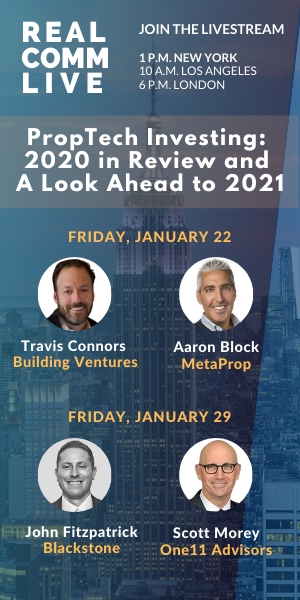Top 5 Ways Smart Building Projects Fail

I recently received an email from a fellow buildings nerd, let’s call her Mary the Mechanical Engineer. Her message had this subject line: “Thinking about leaving the industry…” Mary’s an expert in traditional building systems who has been through many challenges trying to make those systems smarter on project after project. Mary is tired… and I understand why.
Our industry has a lot of ways of producing dumb buildings… we’re very good at it.
 Trying to counteract that - whether you’re a mechanical engineer or facility manager or energy engineer or commissioning agent or software provider - can feel like Sisyphus pushing the boulder up the hill.
Trying to counteract that - whether you’re a mechanical engineer or facility manager or energy engineer or commissioning agent or software provider - can feel like Sisyphus pushing the boulder up the hill.
I feel for Mary because I’ve felt the exact same way. After you’ve been around for a little while, you can start to get jaded. After your 17th meeting with the controls technician about why that controller isn’t actually talking BACnet or exactly what that sensor named “AI3” is measuring, you start to wonder whether this whole smart building thing is worth all the hype. And you just might decide that you can make a bigger impact in another industry.
This is why I feel compelled to speak out today. There is much work to do and our industry desperately needs motivated, smart, experienced, mission-driven professionals. We have work to do (solving climate change, keeping occupants healthy, etc.) and we need these bright minds.
One of the major reasons for jadedness is when projects fail to live up to expectations. They get canceled, drawn-out, delayed, “value”-engineered or sometimes don’t even get approved in the first place.
If I’ve learned anything from the ten years of my love/hate relationship with smart buildings, it’s that many of the reasons these projects fail are actually quite avoidable. By reverse-engineering these failures perhaps we can better understand and avoid the obstacles in the first place.
That’s why we created our course, Nexus Foundations. It’s for those that are new to the industry or those that are industry vets but are new to technology. It teaches a system for getting strategic, where we explore the following five top ways smart building projects fail.
#1: We exclude key stakeholders
First, we (knowingly or unknowingly) exclude key people from the project that should be involved. A building is a complex ecosystem of humans. A portfolio of buildings is even more complex: an ecosystem of ecosystems of humans.
These humans will design, support, approve, purchase, deploy, use, maintain, and upgrade the new technology. To put it another way: technology will be inserted into the way things are already done in the ecosystem: the organizational hierarchy, how things are purchased, which vendors do what, and what the building is in business to do, etc.
A smart building team needs to actively and intentionally define the team of stakeholders that will lead to success. And if any of the key people aren’t involved, you’re probably not considering enough perspectives. You might get a project done, but it’s going to be harder than it needs to be. It’s probably going to be harder to justify continued investment year after year. Worst case, the project gets hung up in the sales cycle because the actual decision-maker isn’t who you thought it was. (1)
#2: We “jump to tech”
Second, we screw up projects by doing what I call jumping to technology. This is when you start with technology and try to match it to the humans. You might start with a specific technology in mind - it’s the hammer and this building sure looks like a nail. Or you might have “shiny object syndrome,” where you get excited about the latest and greatest new smart building buzzword. It will change everything…

Jumping to technology is lazy. It’s hopeful. It skips many steps in the innovation process that are required for understanding human workflows, defining technology use cases, and making sure those shiny objects will actually get used. (2) Our industry can learn and borrow from other disciplines here… we don’t need to start from scratch.
#3: We step on landmines
Third, when we’re new to the industry, we can get a feeling of impending doom - like walking through a minefield. We don’t know when, but eventually, something will probably blow up.
Like the human side of the equation, the systems running our buildings today are just as complex. Each building is a system of systems. Each system comes with its own ecosystem of humans and processes. This big beautiful mess is currently producing dumb buildings. Our projects are getting too far along before this dumbness is well understood… before the landmines within each system are located and tagged.
We should use a systematic process to assess existing building systems for landmines before we add new technology on top of them, allowing us to plan ahead and avoid the surprise explosion.
#4: We make bad vendor decisions
Fourth, frankly, we’re not good shoppers. When we enter the smart buildings technology and services marketplace, we make bad decisions. We don’t know what capabilities we need; we don’t compare apples to apples, and we don’t have a process for selecting the best apples once we do.
To be fair, the marketplace is a murky, confusing, exhausting place to find yourself. No one wants to hang out there for too long. It’s full of the aforementioned buzzwords, overpromises, and so many vendors that appear to do the same exact thing. Simply answering the question “what is it?” often requires a neutral expert consultant.
Luckily, the best of the best vendors are out there and ready to help. We just need to cut through the noise. We need a framework for cutting through the murk and a process for making good decisions.
#5: We make fluffy business cases
Finally, the fifth way we fail. I’ve seen projects that have done all the right things - understanding stakeholders, defining use cases, assessing existing systems, and selecting the best vendors - only to get in front of the decision-maker and pitch a fluffy business case.
Smart building technology is broad, powerful, and becoming more and more proven. It has the potential to transform the way buildings are built, operated, and used by occupants. But businesses don’t invest on potential; they invest on ROI.
We need to show Jerry the money. We need to make the business case with cold, hard, real, relevant, and specific numbers. And not just on this project - we need to continue making the case year after year.
In the Foundations course, we walk through a strategic, holistic system for avoiding these common obstacles (and many more) to smart building success. If I know one thing after ten years, this industry is tough, and the best way to stay on the “love” side of this love/hate relationship is to learn from other’s mistakes and get strategic.
(1): Bonus: Every team has a most valuable player (MVP). For our purposes, the MVP is the smart building champion. I see so many teams try to muscle through a project without a champion. It’s like watching the Chicago Bulls when Michael went and played baseball. And you need Michael.
(2): Notice next time you hear someone talk about smart buildings technology. Are they talking about a specific use case for a specific human or are they using buzzwords, other fuzzy generalities, or super techy details?
This Week’s Sponsor
Schneider’s purpose is to empower all to make the most of our energy and resources, bridging progress and sustainability for all. We call this Life Is On. We are the most local of global companies, advocates of open standards and partnership ecosystems, and our mission is to be your digital partner for Sustainability and Efficiency.
Read Next
 5/15/2025
5/15/2025
Tech, Talent and Transformation: 2025 Digie Finalists Announced For 27 years, Realcomm has presented the Digie Awards to acknowledge companies, real estate projects, technologies, and individuals that have advanced the commercial real estate industry through the strategic use of technology, automation, and innovation.
 5/15/2025
5/15/2025
Empowering Space Management with Data-Driven Visualization For effective CRE space management, it’s critical to centralize lease data, maximize rental square footage (RSF), improve energy efficiency and reconfigure spaces to meet changing needs.
 5/8/2025
5/8/2025
The AI-Powered Workplace Evolution: Redefining the Business Landscape In today's rapidly evolving business environment, the fusion of Artificial Intelligence (AI) and Workplace Management is revolutionizing the way organizations approach workspace optimization and operational efficiency.
 3/27/2025
3/27/2025
The Convergence of Edge Computing, Cloud, and AI in Building Automation and Smart Buildings In the built environment, we have seen the convergence of Operational Technology (OT) and Information Technology (IT), later expanding to include Workplace Technologies (WP).








%20(1)%20(1)%20(1).png)




